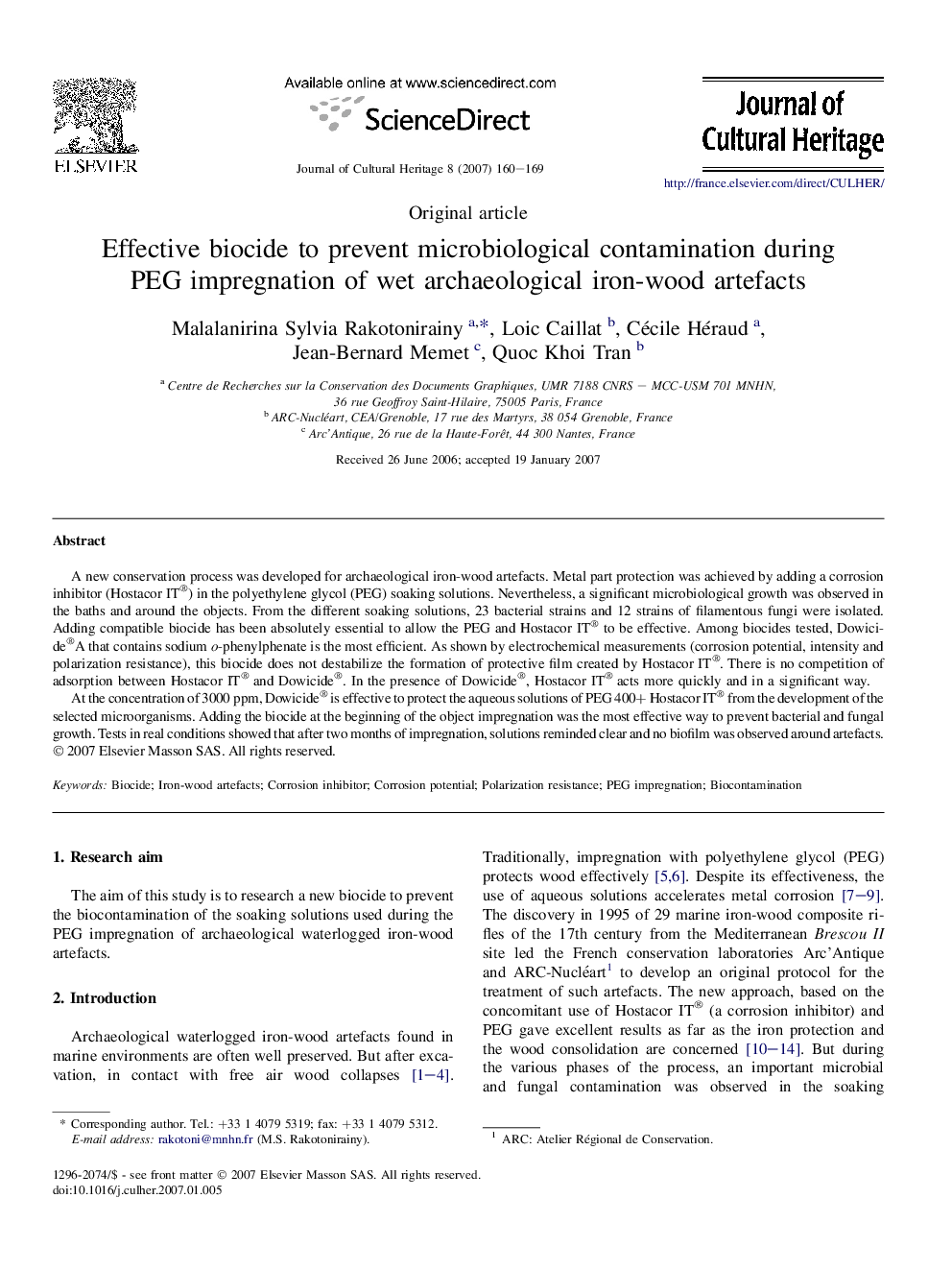| Article ID | Journal | Published Year | Pages | File Type |
|---|---|---|---|---|
| 1038777 | Journal of Cultural Heritage | 2007 | 10 Pages |
A new conservation process was developed for archaeological iron-wood artefacts. Metal part protection was achieved by adding a corrosion inhibitor (Hostacor IT®) in the polyethylene glycol (PEG) soaking solutions. Nevertheless, a significant microbiological growth was observed in the baths and around the objects. From the different soaking solutions, 23 bacterial strains and 12 strains of filamentous fungi were isolated. Adding compatible biocide has been absolutely essential to allow the PEG and Hostacor IT® to be effective. Among biocides tested, Dowicide®A that contains sodium o-phenylphenate is the most efficient. As shown by electrochemical measurements (corrosion potential, intensity and polarization resistance), this biocide does not destabilize the formation of protective film created by Hostacor IT®. There is no competition of adsorption between Hostacor IT® and Dowicide®. In the presence of Dowicide®, Hostacor IT® acts more quickly and in a significant way.At the concentration of 3000 ppm, Dowicide® is effective to protect the aqueous solutions of PEG 400+ Hostacor IT® from the development of the selected microorganisms. Adding the biocide at the beginning of the object impregnation was the most effective way to prevent bacterial and fungal growth. Tests in real conditions showed that after two months of impregnation, solutions reminded clear and no biofilm was observed around artefacts.
